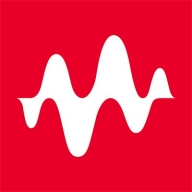

Veracode and Ixia BreakingPoint compete in the cybersecurity market. Veracode is favored for its affordability and user satisfaction, while Ixia BreakingPoint is chosen for its advanced features despite higher costs.
Features: Veracode offers robust security testing, seamless integration, and efficient vulnerability management. Ixia BreakingPoint provides extensive threat simulations, real-world testing environments, and advanced attack modeling.
Room for Improvement: Veracode needs to enhance scanning speed, improve report customization, and expand its testing capabilities. Ixia BreakingPoint requires improvements in easing its learning curve, increasing the responsiveness of customer support, and simplifying its interface.
Ease of Deployment and Customer Service: Veracode is known for its easy deployment and responsive customer service. Ixia BreakingPoint, although having a complex setup, benefits from supportive customer service during deployment issues.
Pricing and ROI: Veracode is considered affordable and offers good ROI with its scalable solutions. Ixia BreakingPoint, while pricier, justifies its cost with its focus on complex testing environments and specialized features.


By simulating real-world legitimate traffic, distributed denial of service (DDoS), exploits, malware, and fuzzing, BreakingPoint validates an organization’s security infrastructure, reduces the risk of network degradation by almost 80%, and increases attack readiness by nearly 70%.
Veracode is a leading provider of application security solutions, offering tools to identify, mitigate, and prevent vulnerabilities across the software development lifecycle. Its cloud-based platform integrates security into DevOps workflows, helping organizations ensure that their code remains secure and compliant with industry standards.
Veracode supports multiple application security testing types, including static analysis (SAST), dynamic analysis (DAST), software composition analysis (SCA), and manual penetration testing. These tools are designed to help developers detect vulnerabilities early in development while maintaining speed in deployment. Veracode also emphasizes scalability, offering features for enterprises that manage a large number of applications across different teams. Its robust reporting and analytics capabilities allow organizations to continuously monitor their security posture and track progress toward remediation.
What are the key features of Veracode?
What benefits should users consider in Veracode reviews?
Veracode is widely adopted in industries like finance, healthcare, and government, where compliance and security are critical. It helps these organizations maintain strict security standards while enabling rapid development through its integration with Agile and DevOps methodologies.
Veracode helps businesses secure their applications efficiently, ensuring they can deliver safe and compliant software at scale.
We monitor all Static Application Security Testing (SAST) reviews to prevent fraudulent reviews and keep review quality high. We do not post reviews by company employees or direct competitors. We validate each review for authenticity via cross-reference with LinkedIn, and personal follow-up with the reviewer when necessary.